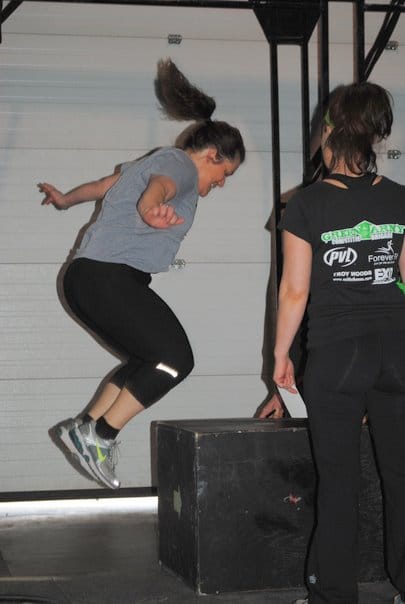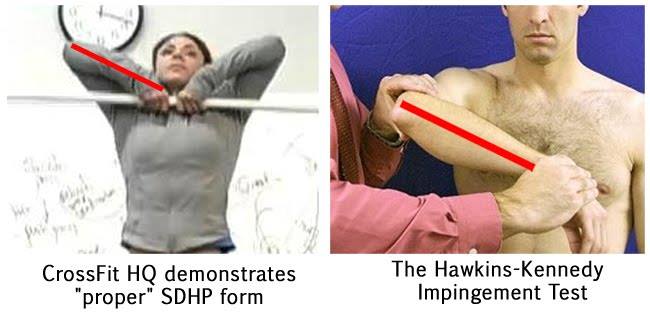
Then:
Burpee Box Jump x 21; Pullups x 21
Burpee Box Jump x 15; Pullups x 15
Burpee Box Jump x 9; Pullups x 9
…for time.
Yes, this looks a little like Fran. FranFest is November 16; you can do it. Sign up online here.
Barbell Bettys starts tonight. The world’s oldest profession – strong women – is constantly renewing itself, and we’re SO JACKED to see returning faces among the group! The front gym will be reserved for them tonight at 8pm (back gym’s open for use!)
I won’t link to the article that falsely associated the Sumo Deadlift High Pull with shoulder impingement yesterday, because I think this stuff gets published as clickbait. But in case you read it, here’s the reason you shouldn’t worry:
From Dan Hollingsworth, physiotherapist:
“If you can not identify the obvious differences between these two positions you need to step away from the whiteboard (and the keyboard, for that matter) and maybe spend a little time with a good anatomy/biomechanics book. May I suggest Anatomy Without A Scalpel by Lon Kilgore?”
The interesting discussion (for me) isn’t about angles, but curves. One curve in particular: the inverted ‘U’ of attention.
When a service becomes popular quickly, it tends to create its own resistance. The sluggish behemoth that was Big Fitness in 1999 created the necessity for a counterculture, and CrossFit filled that void. Now that CrossFit is the largest certifying body and fitness brand in the world, it’s bound to have its own critics. When your opponent is Goliath, you can make a living talking smack about Goliath, because he’s busy elsewhere. That’s understood. Sometimes, it’s welcomed: in a knowledge-based service, constant reconsideration of core principles is necessary for longevity. Question authority, kids.
Greg Glassman has always welcomed discussion, debate and the pursuit of a ‘better way.’ Early CrossFit Games videos highlight Glassman inviting others to ‘show up and beat us. Got a better way? Great. Prove it, and we’ll change what we’re doing here.’ None of us wants to discourage improvement through addition or subtraction.
But criticism for its own sake, or for a little degree of fame, is parasitic. In this case, I believe that the source of the SDHP thinks he’s helping by pointing out a ‘dangerous’ movement. But on the internet, criticism must hold itself up to the same standard as “fact”: it must be repeatable, provable, supported by more than myth and colloquial language. When an author doesn’t consider an alternative viewpoint, or asks himself, “could I be WRONG about this?” he’s not helping anyone. For the record, I struggle to remember this too.
Who can you trust? In my completely unscientific, subjective and biased way, I propose measuring the balance of a writer’s contributions. Before they detract from someone else, who have they helped? Before they tear down, what have they built? If they’re promoting, what have they critiqued? Before they plug something, what hole did they find, and are they sure it’s really there?
Skip to content
Fill out the form below to get started
Take the first step towards getting the results that you want!

